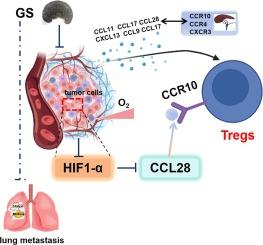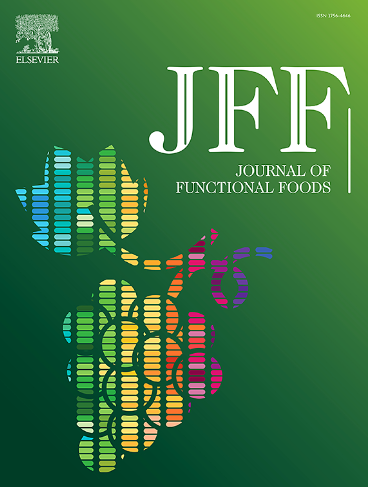萎缩性真菌(无柄灵芝)通过下调CCL28/CCR10通路抑制肿瘤微环境中Treg的招募
IF 4
2区 农林科学
Q2 FOOD SCIENCE & TECHNOLOGY
引用次数: 0
摘要
灵芝(Ganoderma sessile)是一种吸附性真菌,是一种传统中药材,在中国民间医药和烹饪中被广泛使用,在临床实践中具有增强癌症患者免疫力的潜力。然而,灵芝治疗效果的内在机制仍然难以捉摸。因此,我们通过多种乳腺癌模型探索了葛根素的食用价值,以确定其潜在机制。研究发现,葛根素能抑制肿瘤生长和肺转移,延长术后生存期。它能明显增加肿瘤浸润的CD44HiCD62LHiCD8+中医药细胞,同时减少淋巴结和肿瘤中的CD4+CD25+CD127-Treg细胞。GS的作用机制主要涉及调节与Treg招募相关的Hif1-a/CCL28通路。此外,GS 还能降低 Tregs 表面的 CCR10 水平。总而言之,GS通过下调CCL28/CCR10通路抑制Treg的招募,从而抑制了肿瘤的生长和肺转移--这一发现凸显了GS作为天然抗肿瘤免疫制剂的潜力,值得进一步探索。本文章由计算机程序翻译,如有差异,请以英文原文为准。

Saprophytic fungus (Ganoderma sessile) restrained Treg recruitment in the tumor microenvironment by down-regulating CCL28/CCR10 pathway
Ganoderma sessile, a saprophytic fungus, is a traditional Chinese medicinal material used in Chinese folk medicine and cuisine for its potential to enhance cancer patients immunity in clinical practice. However, the underlying mechanisms of its therapeutic effects remain elusive. Therefore, we explored the edible value to determine the underlying mechanisms of GS through multiple breast cancer models. GS was found to suppress tumor growth and lung metastasis, and prolong survival after surgery. It significantly increased tumor-infiltrating CD44HiCD62LHiCD8+ TCM cells while decreasing CD4+CD25+CD127− Treg cells in both lymph nodes and tumors. The mechanism behind GS’s effects primarily involved modulation of the Hif1-a/CCL28 pathway associated with Treg recruitment. Furthermore, GS could reduce CCR10 levels on the surface of Tregs. Collectively, GS inhibits tumor growth and pulmonary metastasis by restraining Treg recruitment through downregulation of the CCL28/CCR10 pathway—a finding which highlights its potential as a natural anti-tumor immune agent warranting further exploration.
求助全文
通过发布文献求助,成功后即可免费获取论文全文。
去求助
来源期刊

Journal of Functional Foods
FOOD SCIENCE & TECHNOLOGY-
CiteScore
9.60
自引率
1.80%
发文量
428
审稿时长
76 days
期刊介绍:
Journal of Functional Foods continues with the same aims and scope, editorial team, submission system and rigorous peer review. We give authors the possibility to publish their top-quality papers in a well-established leading journal in the food and nutrition fields. The Journal will keep its rigorous criteria to screen high impact research addressing relevant scientific topics and performed by sound methodologies.
The Journal of Functional Foods aims to bring together the results of fundamental and applied research into healthy foods and biologically active food ingredients.
The Journal is centered in the specific area at the boundaries among food technology, nutrition and health welcoming papers having a good interdisciplinary approach. The Journal will cover the fields of plant bioactives; dietary fibre, probiotics; functional lipids; bioactive peptides; vitamins, minerals and botanicals and other dietary supplements. Nutritional and technological aspects related to the development of functional foods and beverages are of core interest to the journal. Experimental works dealing with food digestion, bioavailability of food bioactives and on the mechanisms by which foods and their components are able to modulate physiological parameters connected with disease prevention are of particular interest as well as those dealing with personalized nutrition and nutritional needs in pathological subjects.
 求助内容:
求助内容: 应助结果提醒方式:
应助结果提醒方式:


